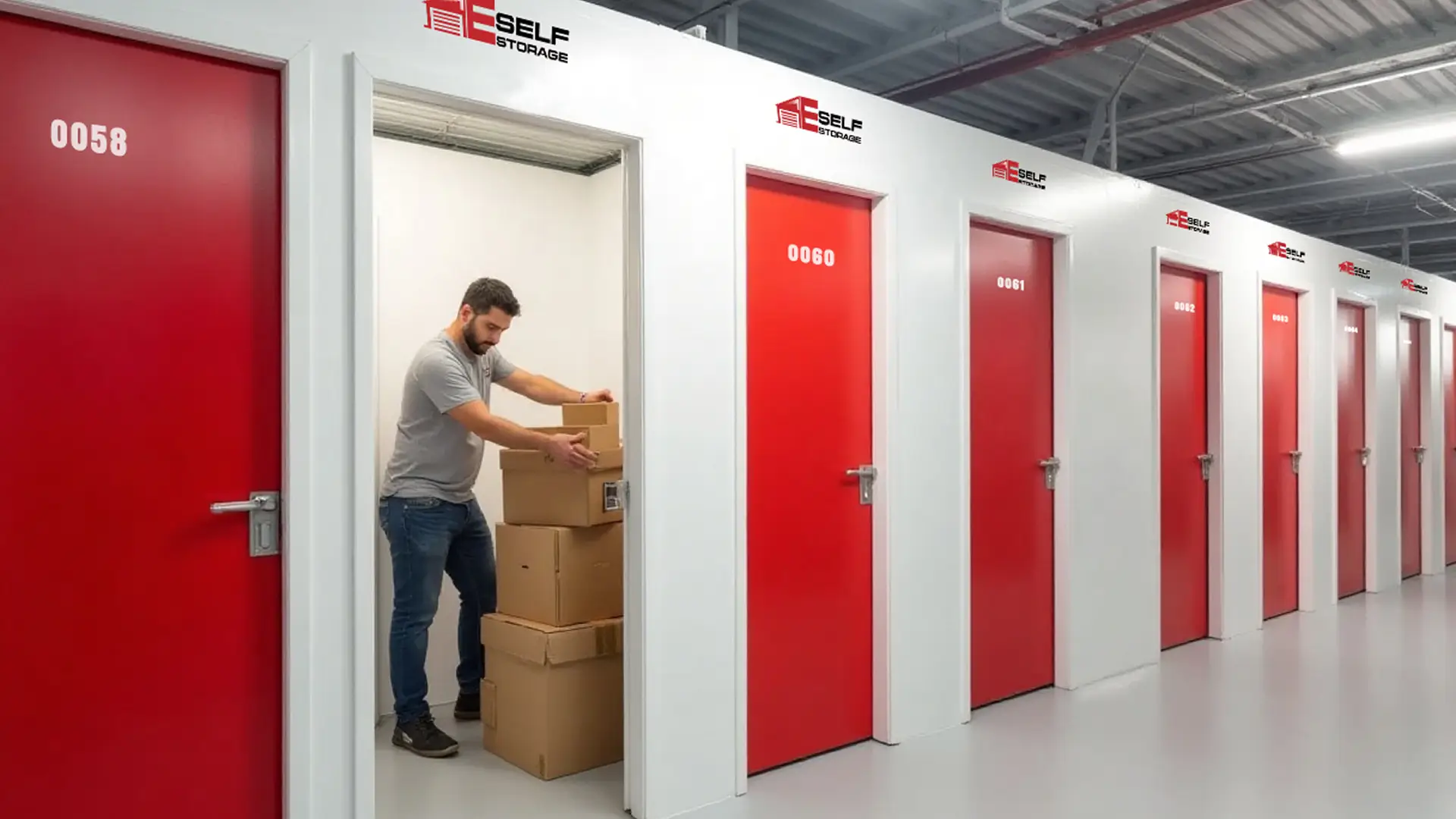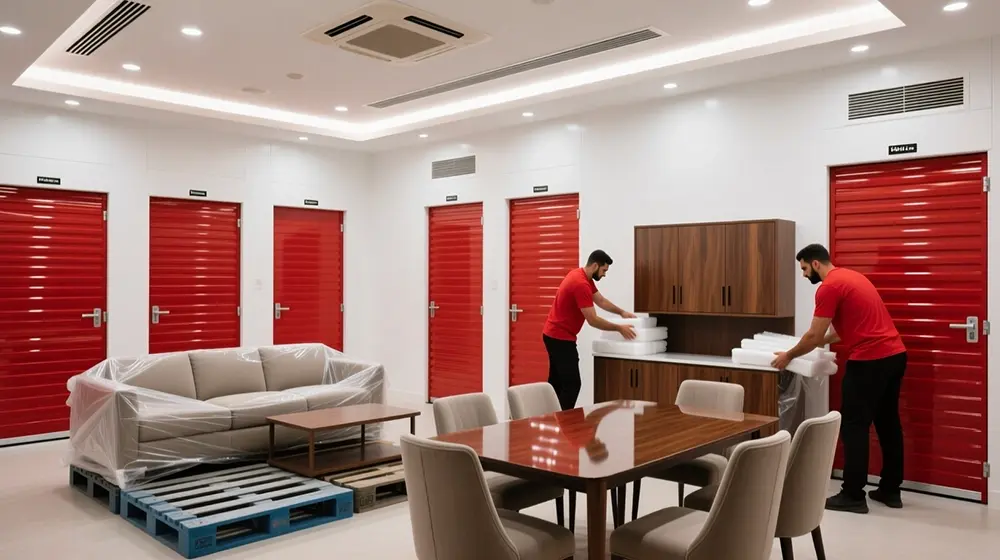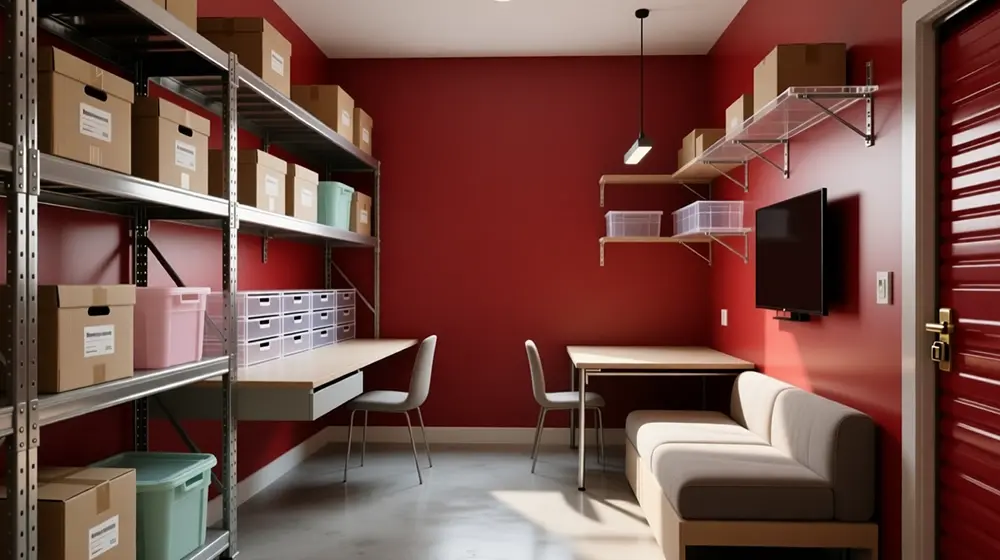Self-storage operators in Dubai don’t optimize for “full at any price.” They price for lifetime value (LTV) and net operating income (NOI) while keeping occupancy within guardrails. Rapid population growth and business activity expand the demand base—Dubai’s population rose ~4.6% in 2024 to ~3.83 million and passed 4.0 million in 2025—supporting disciplined pricing instead of blanket discounting. Gulf News+1
Also Read : Why Self Storage in Dubai Is a Smart Choice During a Move
What is the core objective: occupancy, ADR, or LTV?
Answer: Operators maximize LTV and NOI, allowing occupancy to float inside plan. Research in revenue management shows elasticity varies by time, location, and segment, which supports local, dynamic price setting rather than occupancy-at-all-costs. In storage, accepting some vacancy at the right rate often outperforms pushing to 100% via discounts that damage revenue quality and renewal economics. papers.ssrn.com
Pro-tip: Treat occupancy as a constraint; treat LTV as the objective. If a discount lowers expected LTV below your acquisition cost, don’t take it.
How does Dubai’s demand context shape pricing?
Answer: Population growth + logistics expansion raise the demand floor. Dubai added ~170,000 residents in 2024 (+4.6%), while industrial/last-mile space rents across Al Quoz, DIP, and Dubai South rose 26–48% in 2024, signaling active SMEs and inventory spillover—both classic storage demand drivers. These macro signals justify rate discipline in peaks and measured discounting in shoulders. Gulf News+1
Pro-tip: Track three local indicators weekly: move-in permit volumes from nearby communities, business formation in your catchment, and industrial rent trends; all correlate with storage inquiries.

What does global storage occupancy tell us about the “right” target?
Answer: Mature portfolios run in the mid- to high-80s to low-90s percent range. Public Storage reported 87.7% average square-foot occupancy for 2024; sector updates show ~90% averages in early 2025 across tracked portfolios. These global benchmarks inform Dubai underwriting while you calibrate to your micro-market. investors.publicstorage.com+1
Pro-tip: Set two bands: Operating band (e.g., 85–92%) and Alert band (<82% or >94%). Below the band, test targeted offers; above it, lift street rates or reduce promo depth.
How long do tenants typically stay, and why does that matter for price?
Answer: Typical length of stay (LOS) ranges from 14–20 months across multiple datasets, with a meaningful tail >24 months at quality sites. LTV is simply average monthly rate × LOS; small rate errors compound over long stays, which is why deep move-in discounts can be value-destructive if they attract short-tenure, price-only renters. Neighbor+2SelfStorage.com Moving Blog+2
Pro-tip: Build a cohort table: median LOS by unit type, source, and promo. Kill any promo that pulls LOS below your payback point.
Do “first-month free” and heavy promos work in Dubai?
Answer: Broad first-month-free (FMF) offers often raise churn by attracting discount-hopping tenants; industry analyses warn of short-term lift and long-term revenue drag. Operators achieve better yield with fenced discounts (e.g., business proof, UAE resident ID, ≥3-month prepay) and value-adds (free lock, shelving credit) that preserve headline rate integrity. whitelabelstorage.com
Pro-tip: Replace FMF with “pay 2, get 1 at 50%” on low-occupied sizes only, with a 3-month minimum stay fence.
What pricing methods outperform flat rates?
Answer: Dynamic, unit-type pricing tied to size-level occupancy and pickup pace. Raise rates on high-demand sizes, hold or sweeten value on slow sizes, and use premium “value pricing” for best-located units (near lifts/doors) while advertising a competitive entry price. This mix increases average revenue without promo bloat. StoragePug+1
Pro-tip: Publish from-rates online but default the selector to a premium unit; many renters accept the small uplift for convenience and access.
How elastic is storage demand to price?
Answer: Elasticity is time-varying and segment-specific. Studies show differences across locations and time support local dynamic pricing; in storage, elasticity tends to be lower for urgent, life-event renters and higher for discretionary users. Translation: deepen promos in shoulders or for oversupplied sizes, not during high-compression weeks or on scarce sizes. papers.ssrn.com
Pro-tip: Estimate micro-elasticity per size: test ±3–5% price moves for 14 days; keep changes that improve revenue × conversion.
Should I follow competitors or my own data?
Answer: Track competitors but price to your occupancy, pickup, and LTV. Over-reacting to price crawlers creates a race to the bottom. Sector commentary advises watching competitors while prioritizing unit-type occupancy thresholds, conversion, and lead source quality. StoragePug
Pro-tip: Use a fair-value gap: if you’re ≥3 pts under target occupancy and your rate is ≥5% above the median competitor, act. Otherwise, hold.
What KPI stack should a Dubai facility review every week?
Answer:
- Street-rate index by unit type vs. last week and vs. last year.
- On-the-books occupancy by size; pickup vs. pace (inquiries, reservations, move-ins).
- Promo mix and cohort LOS by promo/source.
- Move-out reasons and cancellation curves.
- Collections and auto-pay adoption (LTV protectors).
- Ops capacity (clean/turn SLAs) to ensure discounts don’t overload staff.
Pro-tip: Put KPIs on one page; green/yellow/red thresholds drive quick pricing huddles.
How should discounts be released—rules that keep ADR healthy
Answer: Discount only when three signals align: (1) pickup is lagging plan or LY, (2) conversion is soft despite traffic, and (3) ops capacity exists to absorb incremental move-ins. Otherwise, change value (prepay credit, free lock, extended hours for a week) rather than rate. This aligns with evidence that broad price cuts in quasi-inelastic periods deliver weak occupancy lift and poor LTV. papers.ssrn.com
Pro-tip: Time-box every promo (e.g., 72 hours), restrict to specific sizes, and cap % of rented units on the offer.
What about churn, renewals, and mid-stay rate increases?
Answer: Storage enjoys sticky tenure for a portion of renters; 21–43% can stay >24 months at quality facilities, and many absorb multiple in-stay increases because switching costs exceed the incremental price. Your job is to raise without triggering unnecessary move-outs. Tie increases to market delta, tenure, and NPS/incident history. Cushman & Wakefield+1
Pro-tip: Start with small, frequent increases (e.g., 6–9% after month 5–7), avoid raising within 60 days of a service incident, and always offer auto-pay credit to cushion perception.
How to compute LTV and set an acquisition ceiling
Answer: LTV ≈ Average Monthly Rate × Average LOS (adjust for fee net and bad debt). If your average rate is AED 400 and median LOS is 14 months, LTV ≈ AED 5,600. Your customer acquisition cost (CAC)—ads + promo cost + staff time—must be well below that number. Operators often use 20–30% of LTV as a hard ceiling for CAC in competitive zones. StoragePug
Pro-tip: Build a payback table: months to break even by source and promo. Kill any channel with payback > 6–8 months unless it delivers superior renewal cohorts.

Where does unit mix fit into pricing decisions?
Answer: Price by unit scarcity, location quality, and move-in friction. Hall-adjacent, ground-floor, or drive-up units command value pricing over interior or upper-floor stock; conversely, oversupplied sizes (e.g., too many 5×5s) carry entry-rate leadership. Combine with LOS fences (e.g., 3-month prepay) to stabilize occupancy without headline cuts. Storable
Pro-tip: Maintain a “heat map” of occupancy by size and zone; raise green cells, defend amber, stimulate red with fenced value—not FMF.
What does an evidence-based cadence look like for Dubai self-storage?
Answer: Operate on three horizons:
- Season plan: publish monthly rate ceilings/floors and occupancy guardrails using city population and business-demand signals. Gulf News+1
- Weekly pricing sprint: adjust 2–5% at the unit-type level based on pickup vs. pace; review promo penetration and LOS cohorts. StoragePug
- Daily controls: hold rate when availability tightens; release time-boxed, fenced offers when conversion stalls despite traffic.
Pro-tip: Keep a pricing changelog; it’s your memory when testing many micro-moves.
Compliance, brand integrity, and the real cost of a bad discount
Answer: In Dubai’s regulated environment, offers that spike short-tenure move-ins can strain operations (turns, lifts, parking) and neighbor relations. The hidden cost is brand dilution—tenants primed to expect constant deals are the first to churn. Use clear terms, limited quantities, and fenced eligibility to protect brand and NOI.
Pro-tip: Measure “promo legacy” by tracking churn within 90 days post-promo compared to non-promo cohorts.
Quick operator checklist (printable)
- Anchor on LTV/NOI; let occupancy float within guardrails.
- Use unit-type dynamic pricing; raise on tight sizes, defend on loose sizes. StoragePug
- Replace FMF with fenced, time-boxed value offers. whitelabelstorage.com
- Track LOS by source/promo; retire any offer with poor payback. StoragePug
- Review weekly KPIs: street rate index, unit-type occupancy, pickup vs. pace, conversions, cancels, collections, ops capacity.
- Run a three-horizon cadence: season plan → weekly sprint → daily control. Gulf News+2Knight Frank AE+2

Conclusion
Dubai’s self-storage pricing is not a race to 100% occupancy. It is a discipline: discounting used like a scalpel, occupancy managed inside guardrails, and lifetime value maximized through mix-level pricing, fenced value, and renewal-friendly operations. A fast-growing population and active SME logistics market expand the demand base, yet global benchmarks remind us that healthy storage portfolios stabilize around the high-80s to low-90s occupancy while protecting street rate. Build your season plan from local signals, run weekly pricing sprints at the unit-type level, and raise with confidence when scarcity appears. When in doubt, ask one question: Does this action raise expected LTV without breaking my operational promise? If the answer is yes, price it in.






